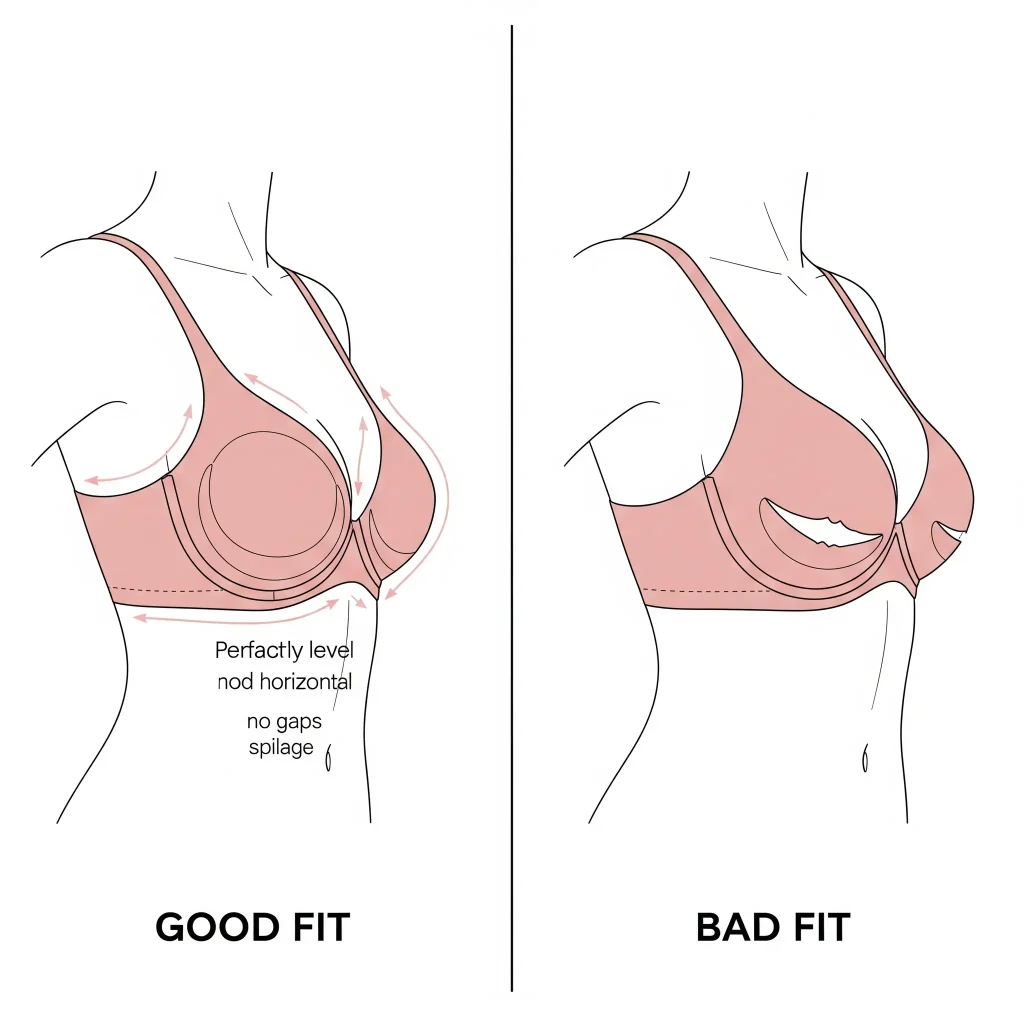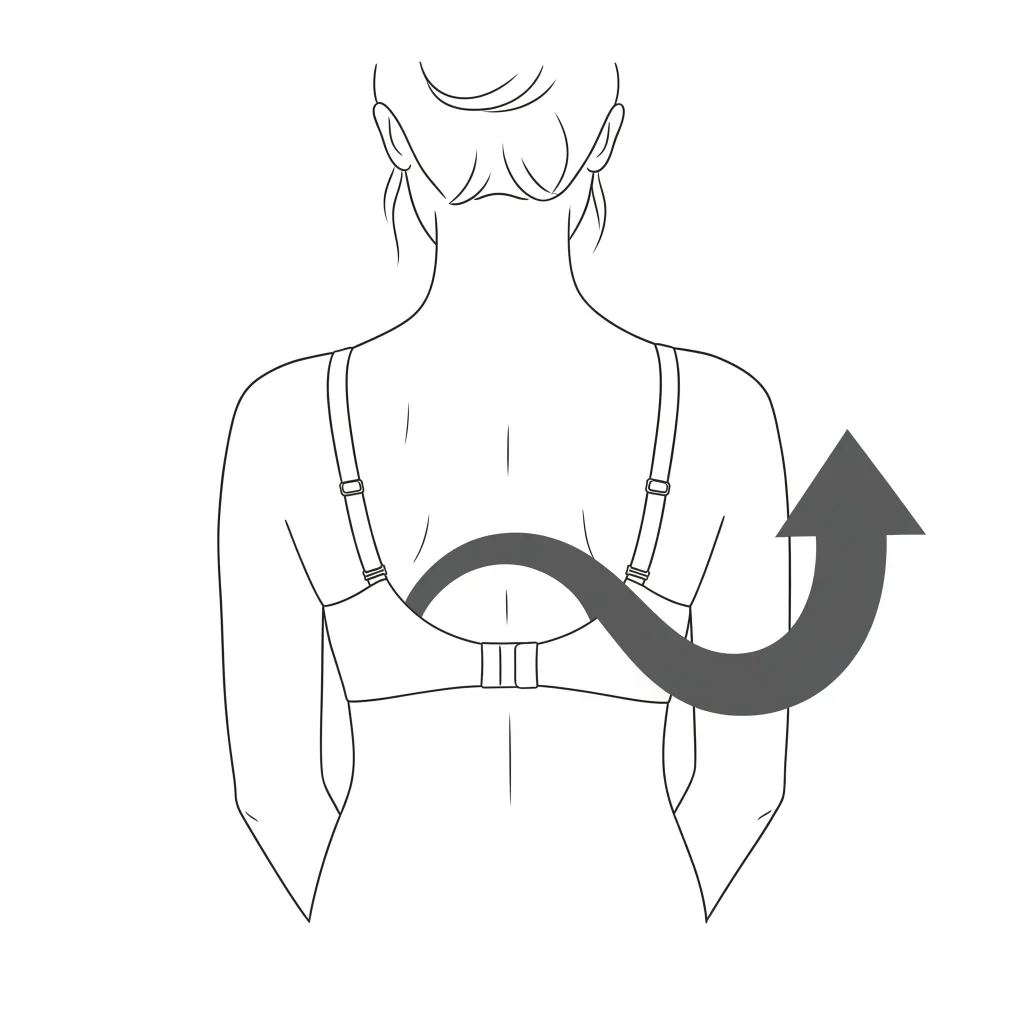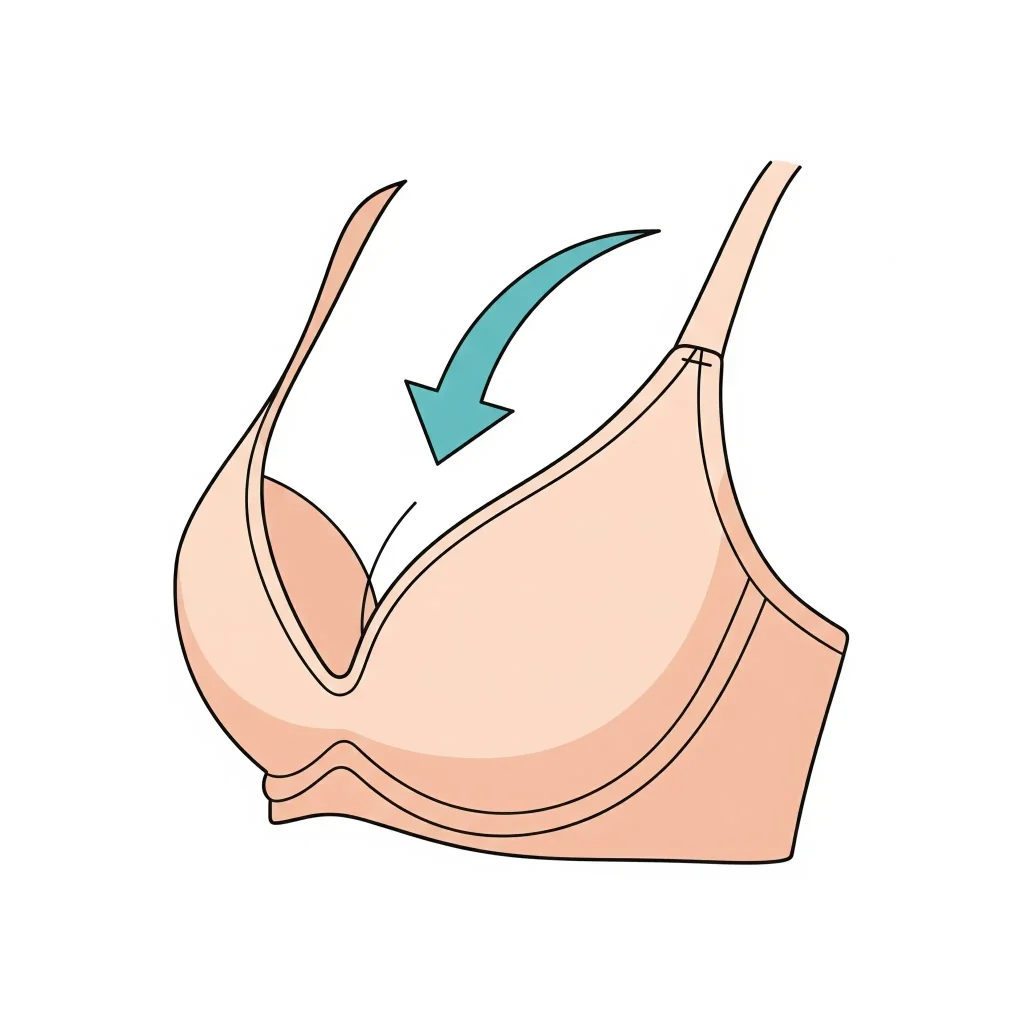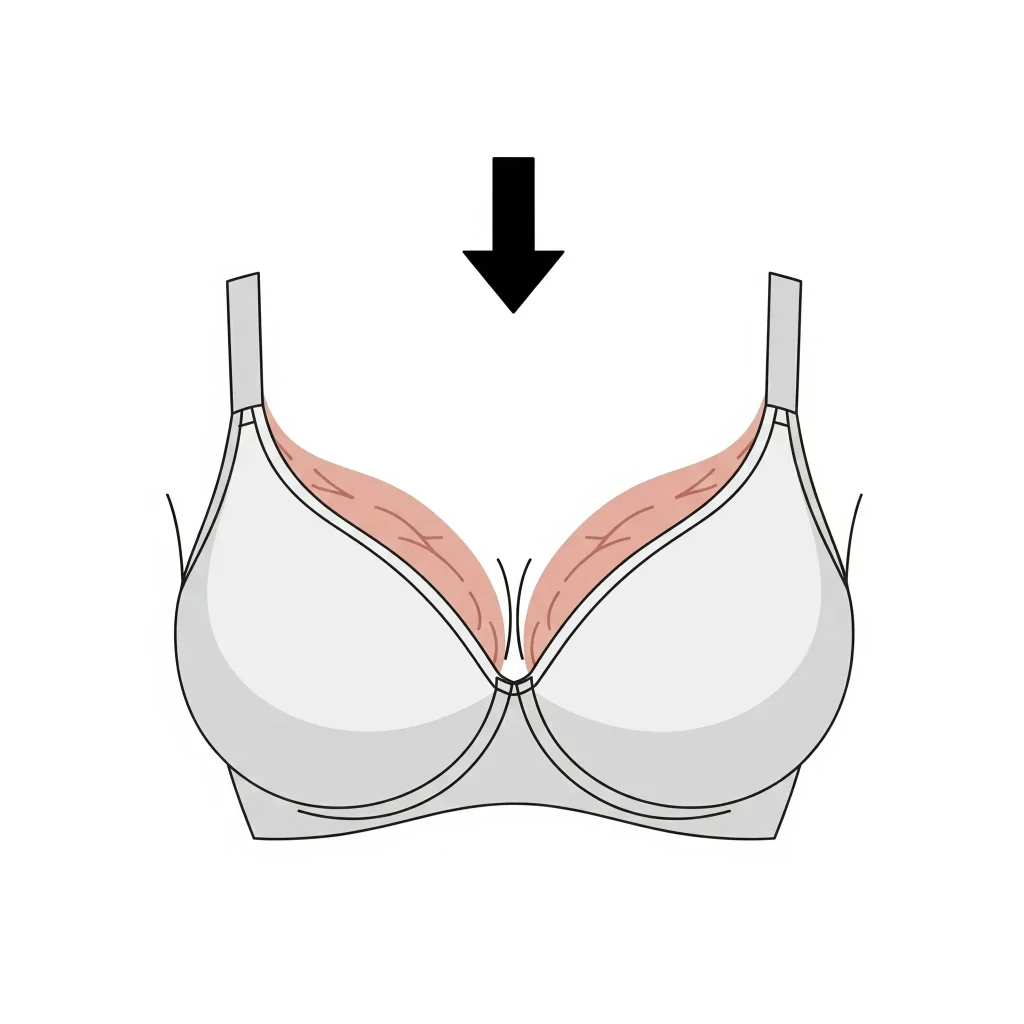The Ultimate Guide to Bra Fit Problems & How to Solve Them
Is there anything more frustrating than a bra that constantly lets you down? The straps that dig, the cups that gape, the band that rides up your back—it’s a daily discomfort that millions of women assume is normal. But it isn’t.
Most bra fit problems aren’t your body’s fault; they’re your bra’s. Understanding what to look for is the first step toward finding all-day comfort and support. This guide will turn you into your own expert fitter, diagnosing each issue and providing a clear, simple solution.
First, What Does a Perfect Fit Look Like
Before we look at the problems, here’s a quick checklist for a perfect fit.

- The Band: It should be snug, level, and parallel to the floor. You should only be able to fit two fingers underneath the clasp. The band provides 80% of the support.
- The Cups: Your breasts should completely fill the cups, with no spilling over the top or sides, and no empty space or gaping.
- The Center Gore (Front Panel): The piece of fabric between the cups should lie flat against your sternum without digging in or floating away.
- The Straps: They should sit comfortably on your shoulders without digging in or slipping off. They provide only 20% of the support.
Common Bra Fit Problems & Solutions
Problem 1: The Band Rides Up Your Back

What it looks like: The back of your bra band arches up towards your shoulders, and you find yourself constantly pulling it down.
What it means: This is the #1 sign of a bad fit. Your band size is too loose. It’s not providing any support, which forces your straps to do all the work.
The Solution:
Go down a band size and up a cup size. This is your sister size. For example, if your 36C is riding up, your sister size is a 34D. This will give you the same cup volume on a snugger, more supportive band.
- Action: Find your correct starting point with our UK Bra Size Calculator.
Problem 2: The Cups Are Gaping

What it looks like: There is empty space at the top or side of the cups, creating a noticeable gap between your breast and the bra.
What it means: This usually means one of two things:
- Your cup size is too big.
- Your cup size is correct, but the bra style is wrong for your breast shape.
The Solution:
First, try going down a cup size (e.g., from a 34D to a 34C). If that doesn’t work, the style is likely the issue. For example, if you have slender or bell-shaped breasts, a full-coverage cup may always gape at the top. You might need a style with less coverage, like a Plunge or Balconette bra.
- Action: Learn more in our Guide to Breast Shapes.
Problem 3: Breast Spillage or “Quad-Boob”

What it looks like: Your breasts are spilling over the top, sides, or bottom of the cups, creating a “double-boob” effect.
What it means: This is a clear sign that your cup size is too small. Your breast tissue has nowhere to go but out.
The Solution:
You need to go up one or more cup sizes. If you are spilling out of a 34D, try a 34DD, and then a 34E if needed. The goal is for all of your breast tissue to be comfortably contained within the cup.
Problem 4: The Straps Are Digging In

What it looks like: At the end of the day, you have painful red marks on your shoulders.
What it means: This is a surprise for many people—it’s not a strap problem, it’s a band problem. Your band is too loose and isn’t providing the necessary support, forcing the thin straps to carry the entire weight of your bust.
The Solution:
You need a snugger band. Try going down a band size and up a cup size (your sister size). For instance, if you’re a 38D with digging straps, a 36DD will provide much more support through the band, taking the pressure off your shoulders.
Problem 5: The Center Gore Doesn’t Sit Flat

What it looks like: The center panel of the bra, between the cups, floats away from your chest instead of lying flat against your sternum.
What it means: This almost always means your cups are too small. Your breasts are pushing the bra away from your body because there isn’t enough room for them inside the cups.
The Solution:
Go up a cup size. This will allow your breasts to settle into the cups properly, letting the center gore tack flat against your chest as it’s designed to. For example, move from a 32DD to a 32E.
Conclusion
Finding the perfect bra is a journey, but you are now equipped with the knowledge to solve the most common fit problems. Remember, the size on the label is just a starting point—the real test is how the bra looks and feels on your body. Use this guide, trust your measurements, and you’ll be on your way to finding the comfort and support you deserve.
